Unite or Die
John Jackson, American Renaissance, March 5, 2021
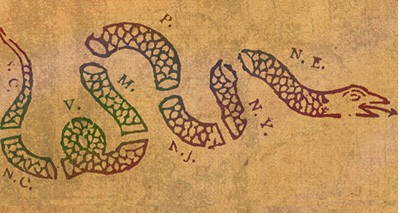
Folk: A Collection on What It Means to Be a People, 2020, The White People’s Press, 232 pp. $50 (hardcover)
“The strength of the pack is the wolf and the strength of the wolf is the pack.” – Rudyard Kipling, The Jungle Book
The White People’s Press, a new publishing house founded to raise “awareness of White interests,” has released a book called Folk: A Collection on What It Means to be a People. With contributions from whites of many different nationalities, its goal, as Canadian academic Ricardo Duchesne explains in the introduction, is to get white people to “start thinking and behaving as a folk; that is, as a people with a common genetic and cultural ancestry.”
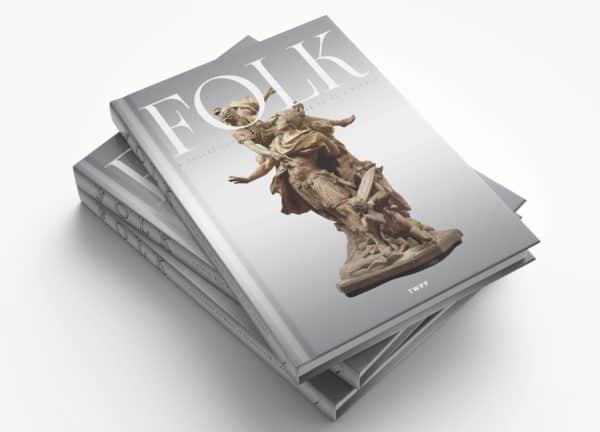
Contributors discuss both particular white ethnicities and the white race as a whole. American pro-white activist and author Jason Köhne (YouTube channel: No White Guilt) argues that whites cannot be a people based on shared values alone, but must identify as a group on a biological and spiritual level.
Contributor Jeff Winston explains how the story of folk hero Johnny Appleseed inspires a proud American identity. Writer and veteran Ash Donaldson argues that a folk needs a shared ancestry, mythology, spirituality, and language. Musician Jared George contributes a short story about a young boy and his sister in a future society in which whites have regained a positive identity. The boy uses a book about the anti-white horrors of our era to explain the consequences of a people losing its way. Arktos editor in chief John Bruce Leonard argues that whites must rediscover spirituality as the basis for a confident group identity. As he puts it, “never was a people conquered that preserved its gods.”
An Australian contributor who calls himself Lovely Porridge discusses his own nation in one of the book’s best essays. He begins with a story of three white men (an Englishman, a Frenchman, and an Australian) traveling through the desert who meet a group of hostile savages. They announce that they will kill the whites and use their skins to make a canoe, but that each of the three may make a wish before he dies. The Englishman asks for a knife and kills himself with it, rather than let the tribe kill him. The Frenchman does the same. The Australian asks for a fork and uses it to poke holes in his skin, yelling, “There goes ya bloody canoe, ya bastards!”
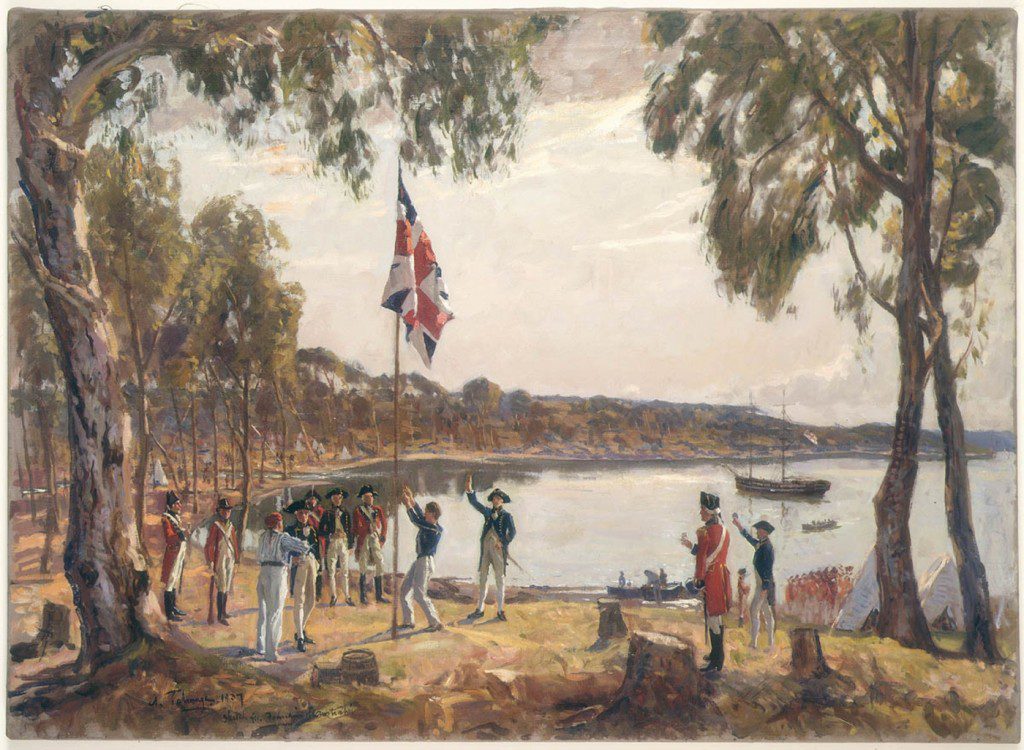
“The Founding of Australia. By Capt. Arthur Phillip R.N. Sydney Cove, Jan. 26th 1788” painted by Algernon Talmage in 1937.
The claim that Australians are tough is usually traced back to the country’s beginning. The first European settlements in Australia were British penal colonies, but that isn’t the full story. Today, only about 1 in 5 Australians have convict ancestry. Mr. Porridge argues it was mainly the harsh environment that toughened them and also shaped the national character:
Maybe Aussie friendliness came about because the glaring sun gave us a permanent squint which made it appear as though we’re always smiling. Maybe the Aussie sense of irony came from situations such as devastating droughts finally ending in floods. Maybe Aussie self-deprecating humour came about because it was hard to take yourself too seriously when a snake could send you running and screaming from the outhouse with your pants between your ankles.
Unfortunately, like other Western nations, Australia is awash in anti-white propaganda. The common man is not ashamed to be white, but the intelligentsia are different. Around the late 2000s, depictions of Australians in the mass media changed from being self-deprecating to outright hostile. Media personalities and comedians began expressing disgust for working-class whites. One TV series began with the host announcing, “I’m Joe Hildebrand and I’m dumb, drunk and racist. Why? Because I’m an Australian.” Many Australians, accustomed to laughing at themselves, don’t think this line is sinister or even noteworthy. Australia is also becoming less white. Immigration has made many suburbs majority non-white and they “do not resemble Australia in any way.”
What can ordinary Australians do about this? Mr. Porridge recommends reviving the “Australian fighting spirit” and refusing to go along with trendy ideology. When he meets people who disparage Australians, he tells them that he is not impressed because he is “not anti-white.” He believes most Australians are still patriotic and “the tide is turning” in their favor.
In her essay, Laura Towler, leader in the nationalist Patriotic Alternative party, writes about her native Yorkshire, a large county in the north of England. Historically, the area’s economy was based on textiles and it was known for high quality fabrics. During the Industrial Revolution, productivity increased, but so did poverty. Working conditions in factories were poor, wages were low, cities were overcrowded, and disease spread. Miss Towler argues that class divisions grew sharper. Those who could afford to moved away, and many became hostile to the working-class “Yorkshire” accent and the hobbies associated with the poor, such as boxing.
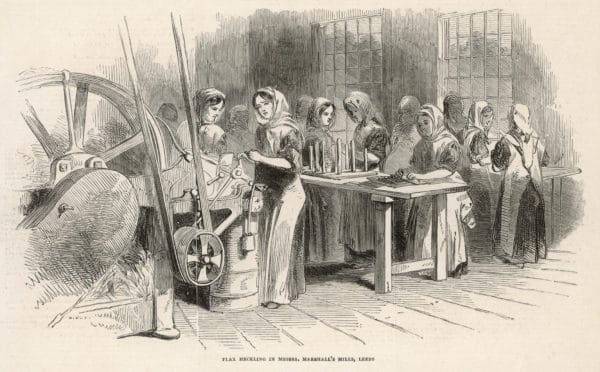
Young flax hecklers in Marshall’s mill, Leeds (Yorkshire, England) 1846 (Credit Image: © Mary Evans via ZUMA Press)
More recently, Yorkshire has suffered from mass immigration; as foreigners move in, whites move out. In Savile Town in Dewsbury, West Yorkshire, the 2011 census recorded only 48 white residents out of 4,033 people. Muslim rape gangs have preyed on Yorkshire, especially in Rotherham, Keighley, Leeds, Bradford, Huddersfield, and Sheffield. Globalization has cost Yorkshire its most important industry. The major mills closed in the 20th century, mainly due to foreign competition. Miss Towler notes that “these stories may not have happy endings yet,” but is optimistic that some day “we will rebuild.”
An excellent piece comes from a German, Liv Heide, founder of the whites-only dating site WhiteDate.net. She discusses experiences with people of other races that led her to prefer her own kind. While living in Paris, she shared an apartment with people from all over the world. Her roommates included “a Colombian guy who thought it was normal to have his mother, sister, and friends come over and cook for him every day” and a Brazilian woman who lifted her top to show off her breast implants.
She explains that “honesty, reliability, intelligence, kindness, patience, sense of humor, creativity, productivity and strong work ethic were qualities I found mainly in White[s].” She also found similar qualities in northeast Asians, but “never managed to understand their sense of humor” and found they lacked creativity.
Miss Heide also notes that she has met many couples and finds that those who are racially similar are more likely to have lasting relationships. She argues against race-mixing and says whites should choose their spouses very carefully and marry only within their race.
The book is densely illustrated, with many paintings by 15th- to early 20th-century artists. These include Dutch painter Gaspar van Wittel, known for his panoramic cityscapes such as Piazza Navone, Rome (1699) which showcase European architecture.
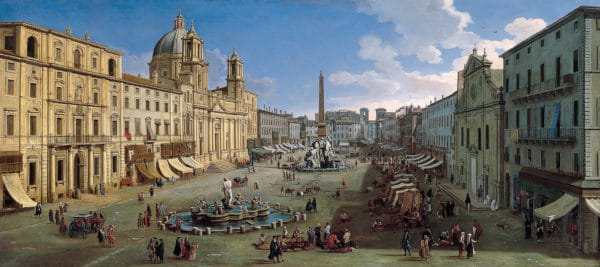
Piazza Navone, Rome by Gaspar van Wittel
There is a painting by Heinrich Maria von Hess called Boniface Fells the Donar Oak (1834). Saint Boniface was a Benedictine monk from England who was known for converting German pagans to Christianity, and the image represents the victory of the cross as the monk chops down a tree the pagans held sacred.
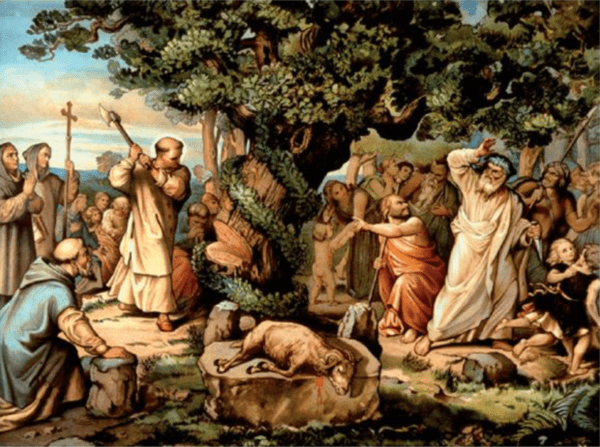
Boniface Fells the Donar Oak by Heinrich Maria von Hess
Another painting is Knight at the Crossroads (1878/1882), by Russian nationalist painter and architect Viktor Mikhailovich Vasnetsov. A knight from East Slavic folklore pauses before two skulls, horse and human; an inscription on a rock warns of certain death if he continues.
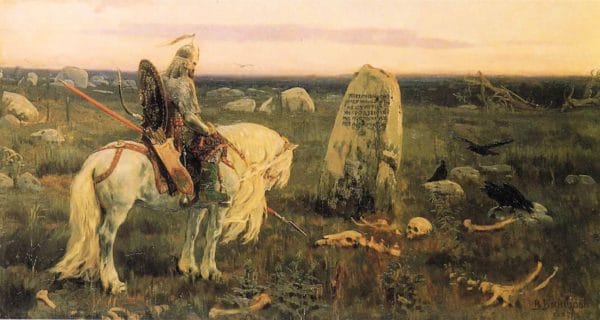
Knight at the Crossroads by Viktor Mikhailovich Vasnetsov
Like the knight, whites face a crossroads. Demographic trends and institutions are against us. Our decline stems largely from our lack of unity; like the authors, we must identify with our own kind.















